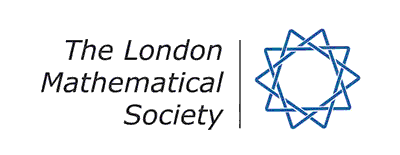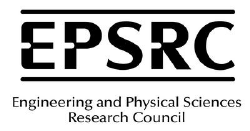![]()
![]()
![]()
LMS/EPSRC Short Course: Fusion Systems |
||
 |
July 30 to August 3, 2007
School of Mathematics
|
 |
The lecture series will start on Monday afternoon and finish on Friday. On Friday afternoon there will be two special lectures.
The group theory part of the course will focus on extending results
in the local theory of finite groups to the more general setting of saturated fusion systems
and p-local finite groups. We will discuss the exotic 2-local finite groups of Levi-Oliver/Benson-Solomon,
constructed as fixed points of Frobenius maps on a 2-local compact group, realized as the fusion system of the free amalgamated product of
algebraic groups, with linking system constructed via signalizer functors.
However, we will begin with basic results on saturated fusion systems due to Puig and BLO
(Broto-Levi-Oliver). Then we will
discuss the BCGLO (BLO+Castellana + Grodal) theorem that constrained fusion systems have models as the fusion system of a constrained
finite group. Then we move to deeper material, such as the notion of a normal subsystem of a saturated fusion system, the generalized
Fitting subsystem of such a system, etc. We will close with a discussion of the exotic 2-local examples.
Every block of a finite group algebra over a field of positive characteristic has an associated saturated fusion system the nature
of which has a profound effect on the underlying representation theory. The course will begin with a general introduction--group
algebras, Maschke's theorem, failure of complete reducibility in positive characteristic,
p-modular systems, blocks. This will be followed by the core concepts-- Brauer homomorphism, defect groups, Brauer pairs, fusion systems over maximal Brauer pairs, proof of
saturation. The relationships between the fusion system and other invariants of blocks, both known and conjectural will be
studied relative projectivity, structure of blocks with central defect groups and extensions
(Kulshammer-Puig structure theorem),
Alperin's weight conjecture, alternating chain formulations, fusion category algebras, glueing problems. The course will also discuss the nature of fusion systems arising from
blocks--principal blocks (Brauer's third main theorem). Are all block fusion systems non-exotic? Can one develop a Clifford theory for
block fusion systems?
This series of talks will begin with background material including the nerve of a category. We will also discuss the
p-completion construction due to Bousfield and Kan. We will define the classifying space for a saturated fusion system
F in terms of the p-completion of the nerve of a linking system associated to
F.
When G is a finite group, the p-completion BGp^ of the ordinary classifying space
BG has certain unusual homotopy theoretic properties; properties which follow as consequences of the
Sullivan conjecture in the form proved by Miller, Carlsson, and Lannes. For example, for any finite
p-group P, the set of maps from BP to BG up to homotopy (up to continuous deformation)
is in bijective correspondence with the set of homomorphisms from P to G up to conjugacy. The background to these results, and the
analogous results for classifying spaces of fusion systems, will be discussed during these talks.
Finally, some examples of "exotic" fusion systems and their classifying spaces will be described. The simplest examples are
those due to Ruiz and Viruel, over the extraspecial group of order 73 and exponent
7. Other examples which will be looked at include the 2-local fusion systems predicted by work of Solomon and
constructed explicitly by Levi and Oliver, and their close connection with the Dwyer-Wilkerson space as predicted by Dave
Benson. This also helps to motivate some generalizations of p-local finite groups with connections to compact Lie groups and
p-compact groups.
Accommodation has been arranged in single ensuite rooms in the university's halls of residence.
Here's a website giving limited information. Note that we have breakfast in a room called Fusion. That should be easy to remember. Here's the website. And here is another one.
Rebecca Waldecker has kindly put together an entertainment website for us. It's here.
There will be a coach excursion to Stratford upon Avon on Wednesday Afternoon.
Here are some maps and various directions.
More details will follow.
Here will be a list of prerequisite reading for people attending the course.
Here are course notes for Professor Aschbacher's contribution to the summer school.
Here are notes by Dr Kessar. (this is a dvi file) They give an introduction to block theory.
Here are notes by Professor Linckelmann. These notes contain many of the standard results on fusion systems.
Here is a survey by Boto, Levi and Oliver that will offer valuable background material.
Here are some notes about fusion in finite groups by Paul Flavell. These might give those of you with a limited background in group theory an idea where many of the results in fusion systems first arose.
Important references include
Aschbacher, M. Finite group theory. Second edition. Cambridge Studies in
Advanced Mathematics, 10. Cambridge University Press, Cambridge,
2000.
Broto, Carles; Levi, Ran; Oliver, Bob The homotopy theory of fusion
systems. J. Amer. Math. Soc. 16 (2003), no. 4, 779--856. This can be downloaded here.
This appears as reference BL0 in Aschbacher's notes.
Further information is available from: Chris Parker and Sergey Shpectorov.